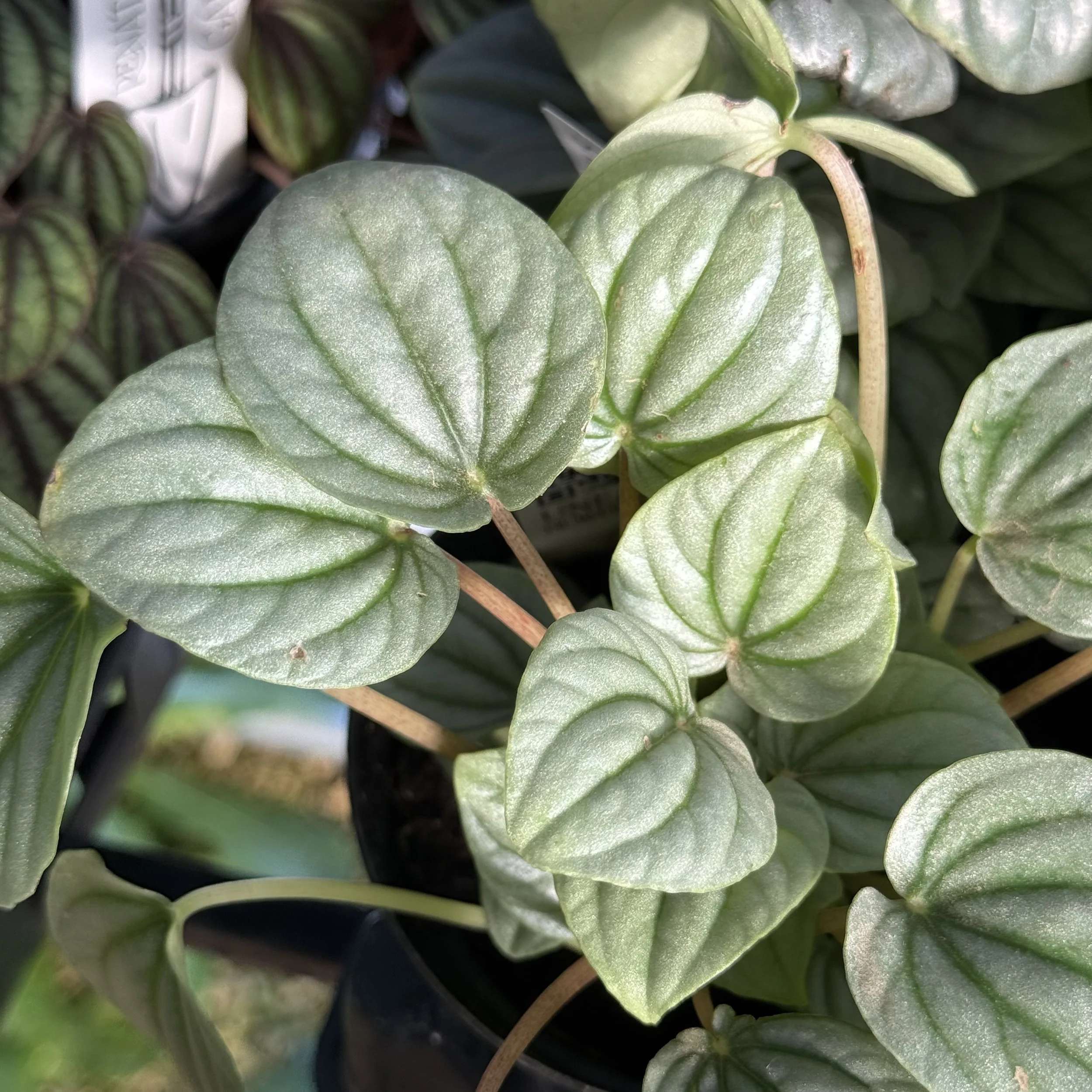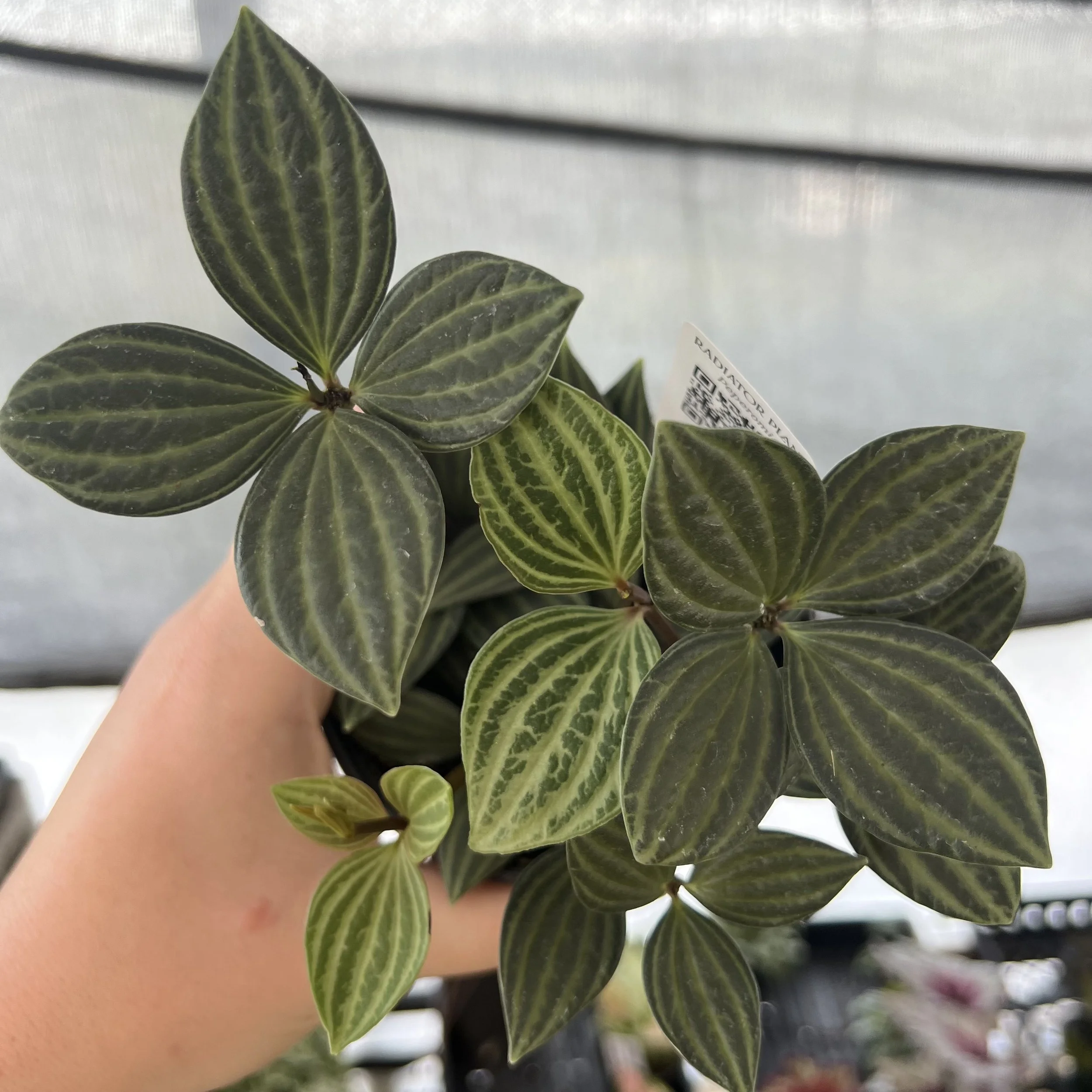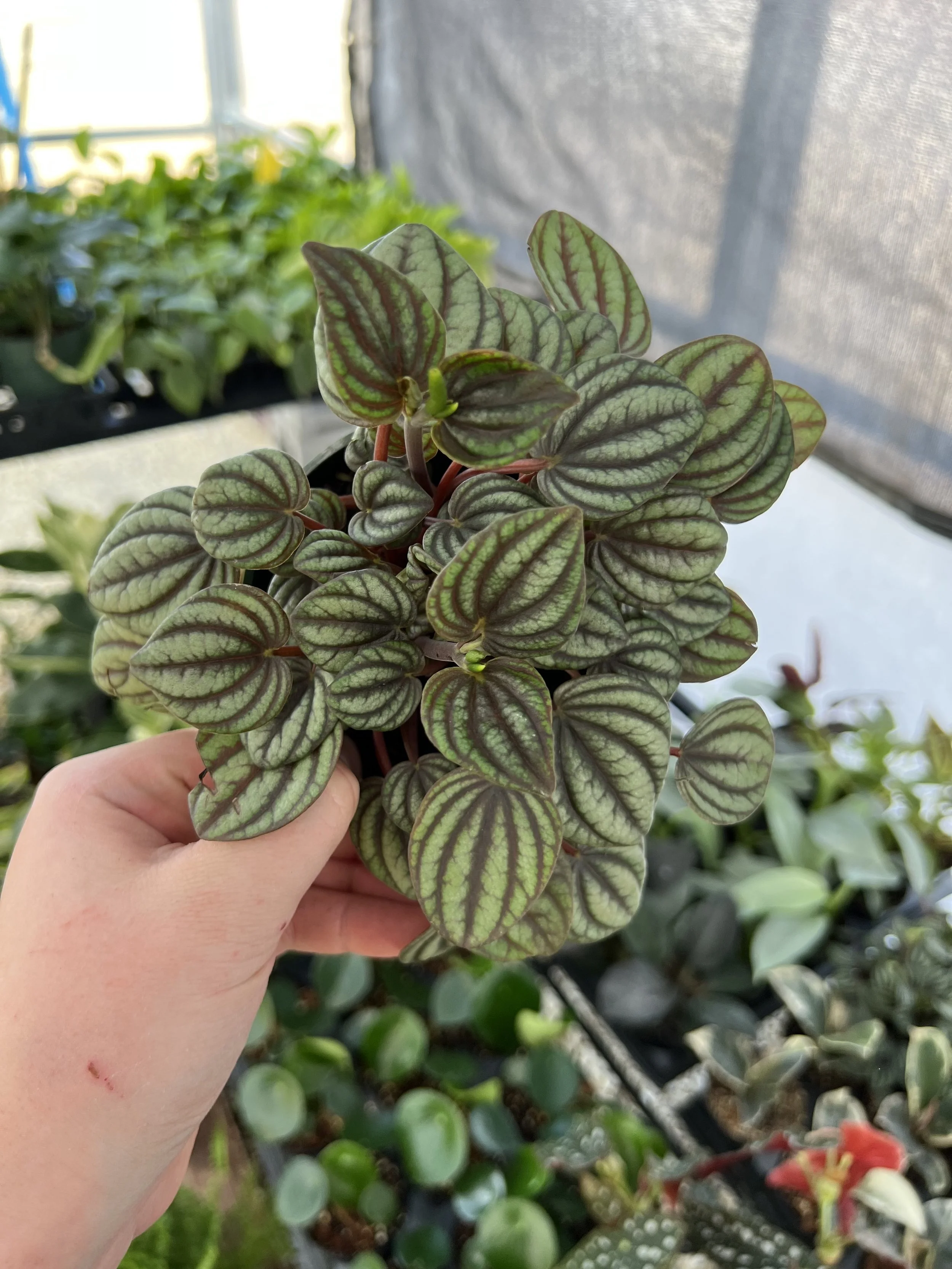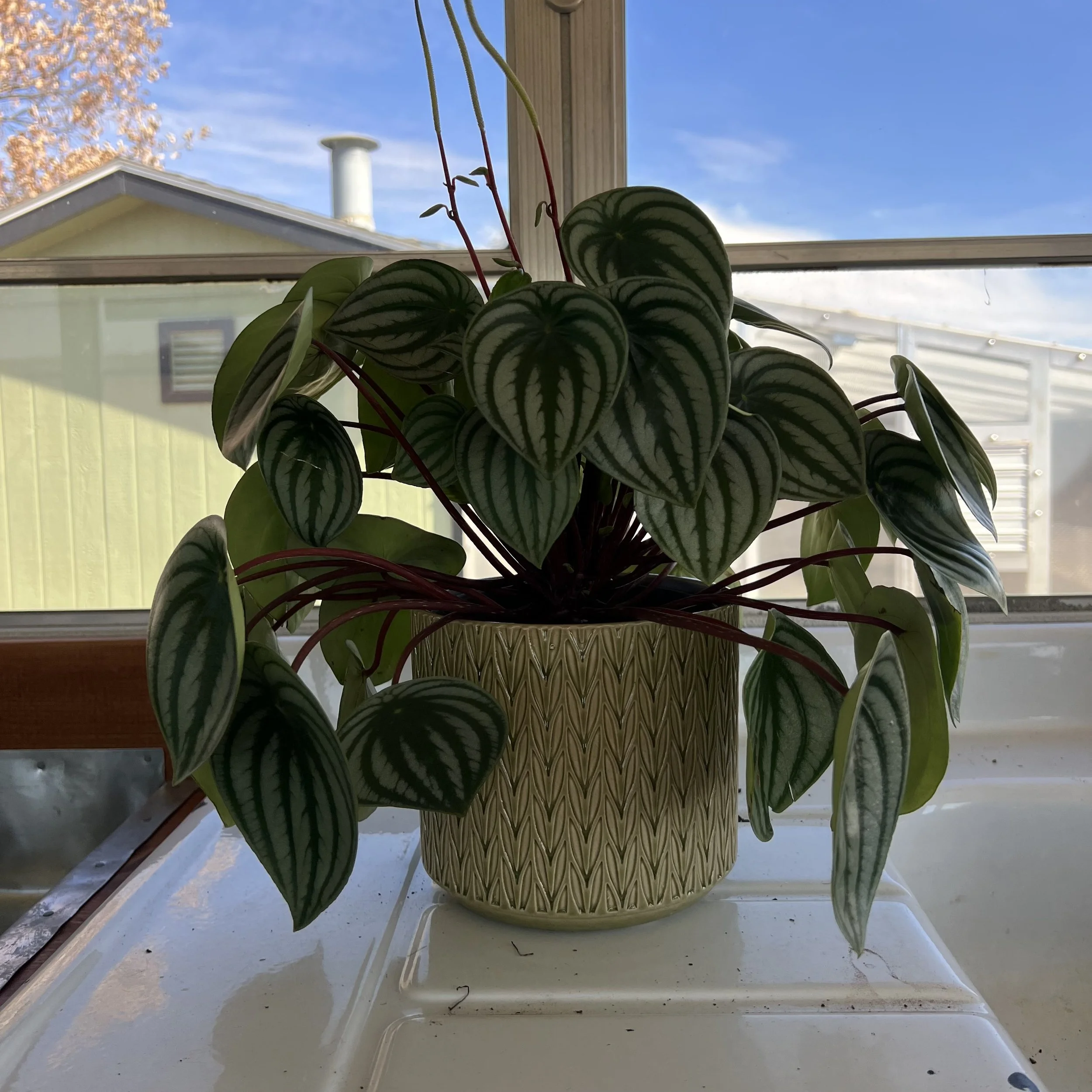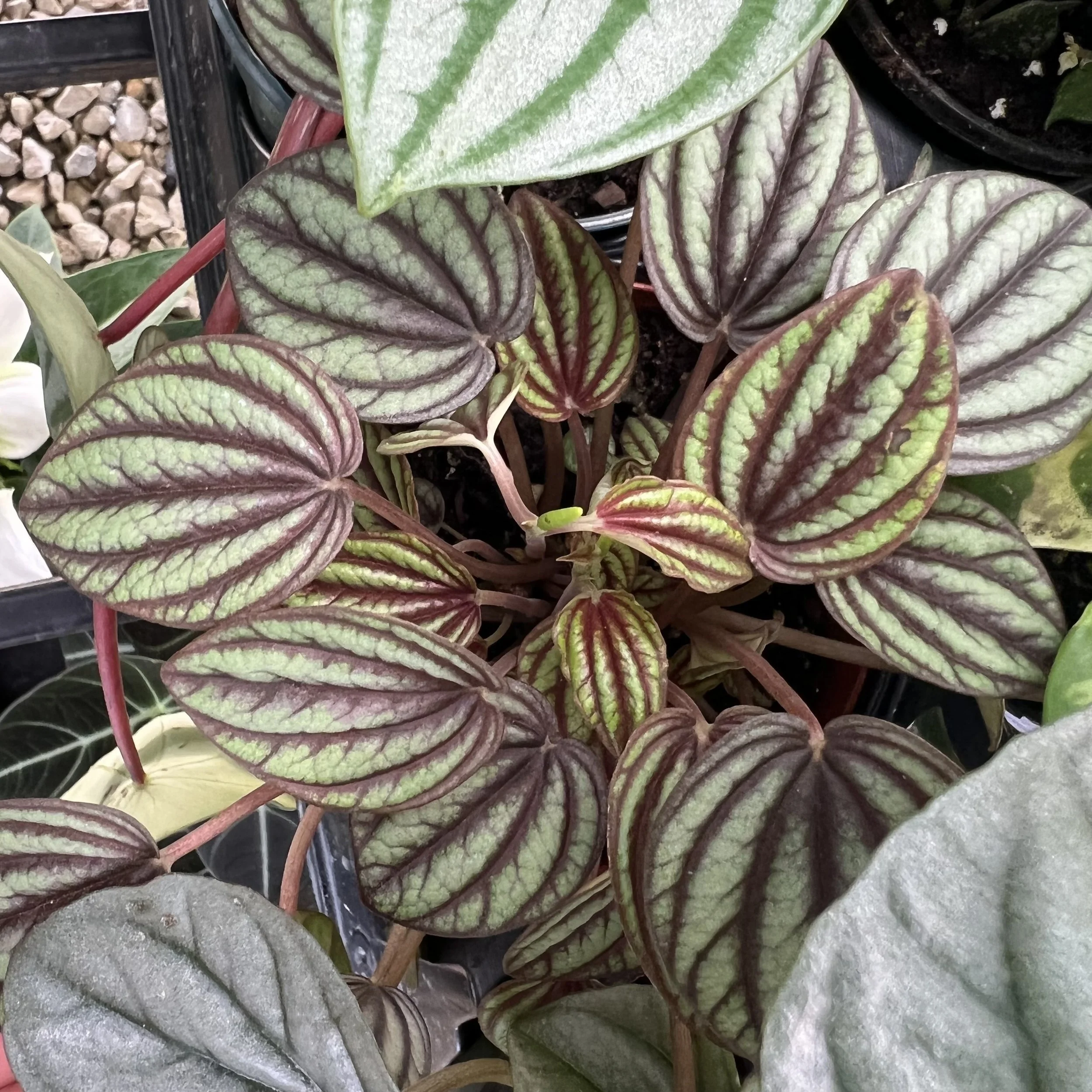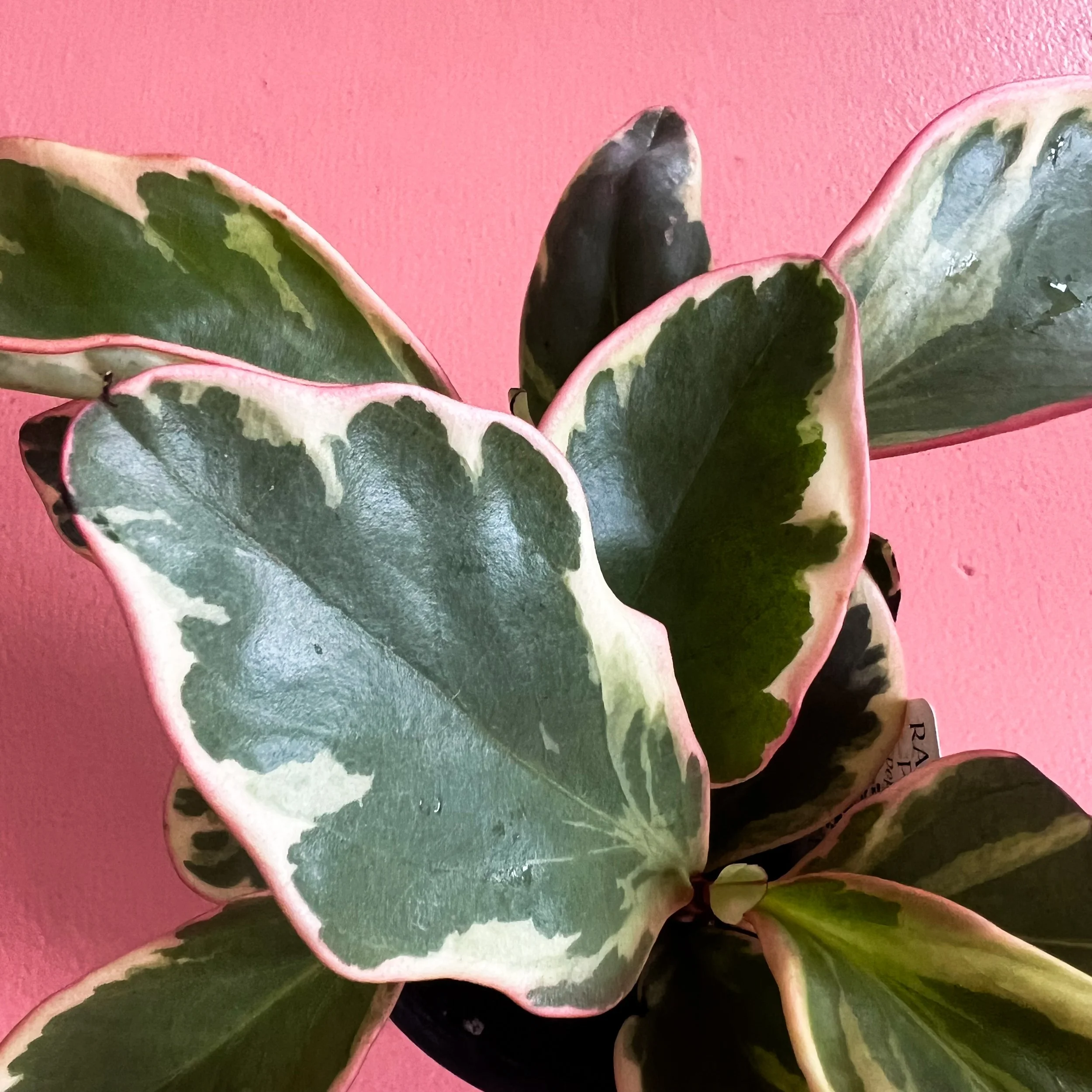RADIATOR PLANT
Peperomia
Family Piperaceae
-
Light: Provide bright, indirect light. Low light levels can lead to dark leaf spots and plant decline.
Temperature: 60-80 F
Peperomias hate the cold! Avoid cool windowsills in winter months.
Humidity: low to medium
Radiator plant has its name for a reason. Peperomias can tolerate low humidity because of their semi-succulent foliage.
-
Water: Drainage. Drainage. Drainage. Peperomia are not cacti, nor are they your typical foliage plant. They have shallow root zones that like frequent wet-dry cycles.
Repotting: To help with your plant’s wet-dry cycles, plant in shallow containers and avoid upsizing containers to quickly. Repot every 2-3 years into a slightly larger container (1-2” increased diameter or depth). Use a general purpose potting mix.
Fertilizing: Either…
Water Application: Incorporate fertilizer into your watering cycle once per month March through September. Dilute an all purpose fertilizer (20-20-20) by half OR use your favorite fertilizer rated for houseplant use in your water.
Slow Release: Incorporate slow release fertilizer pellets into the top inch of potting soil every 6 months. Apply the rate indicated for indoor plants on the label. If no recommendation for houseplants is present, apply 1/4 to 1/2 the listed rate.
-
Even though peperomia is in the pepper family, the peppers we think of are not related at all.
Table pepper comes from this family, completely unrelated to Capsicum annuum, the vegetable.
Plants in the Piperaceae family all share a unique inflorescence that looks like a tentacle. (If you know you know…) There are microscopic florets along each stringy spike. When pollinated, they form “corns” (a.k.a. peppercorns)! Look it up!
-
(Listed in order of commonality…)
Root decay caused by overwatering
Lack of growth or leaf loss due to low temperatures
Physical damage
-
Are peperomias pet safe?
Yes
Cultivars & Species
How to Care for Peperomias
I've said it before and I'll say it again. Peperomias are COOL! In this episode of Unearth Horticulture, dive into the deep Peperomia genus with me. Let's take a closer look at the similarities and differences in peperomias according to their species and cultivars (cultivated varieties). Some like constant moisture checks, whereas others can go weeks before they need to be remembered.
These are the species mentioned: Baby rubber plant (P. obtusifolia), pepperoni plant (P. caperata), watermelon peperomia (P. argyreia), string of turtles (P. prostrata), parallel peperomia (formerly P. puteolata, currently P. tetragona) & hope peperomia (P. deppeana x quadrifolia).


